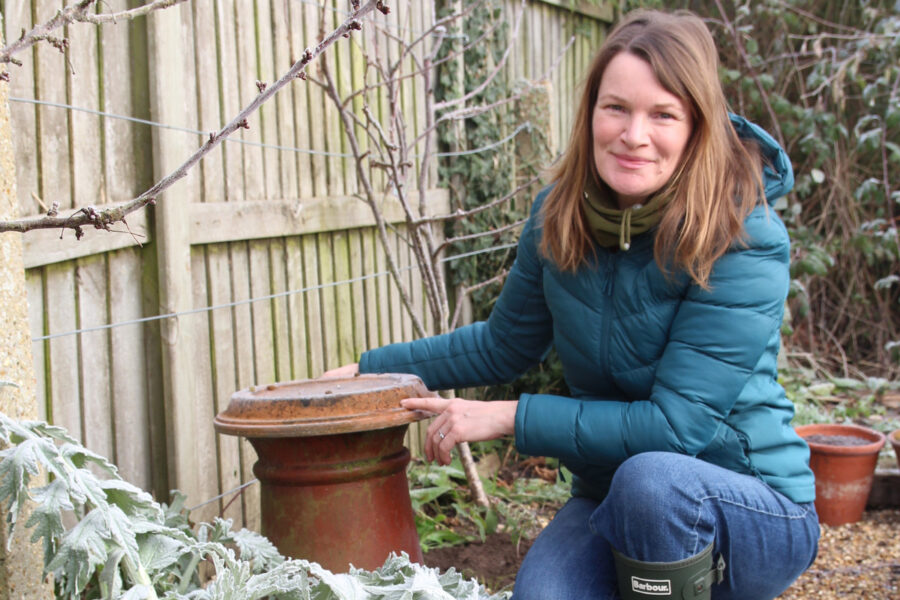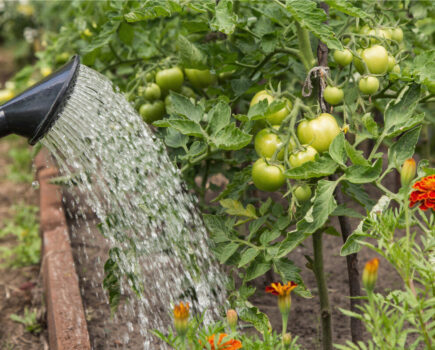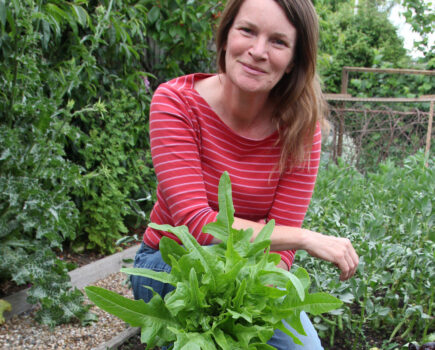Lucy explains how to make the most of the next few weeks
Brace yourself Instagrammers, the forced rhubarb reveals will soon be upon us! And who can fail to be impressed by videos unveiling hot pink stems topped with sulphur-yellow leaves? It all does look very pretty. But, most importantly, forced plants taste utterly scrumptious, so how do you go about it if you’ve not tried forcing before, and is rhubarb the only crop you can force? Luckily, no.
Perennial edibles are undergoing a revival, and many can easily be forced. I annually force seakale now, and can testify that it is truly delicious. Globe artichokes, asparagus, sorrel, chicory, lovage and dandelions (yes, dandelions!) all produce incredibly tasty forced shoots. The flavours are milder and sweeter than the unforced edible, and the texture is non-fibrous and tender. So, how is forcing achieved?
Essentially, these perennial plants are deprived of light, at a time when the new shoots are bursting forth in spring. So, clumps covered now will yield forced shoots for you during March and April. Clumps must be healthy and mature (young and weak plants will become stunted, as forcing steals energy from the plant). Remove any slugs and snails (they love the protected environment of a forcing pot) along with any foliage, then cover over clumps with a large upturned bucket, dustbin, dalek compost bin or fancy forcing pot (cover up any holes, too). I use old chimney pots and terracotta saucers. Keep peeking inside because the speed of forcing depends on the plant and the weather, then harvest the succulent shoots once they’re large enough.
Forcing does exhaust plants, so only do so for 4-6 weeks, then remove all covers and allow clumps to recover (don’t force these clumps next year). Forcing enthusiasts can even slice off clumps, pot them up and force in warmth for quicker results (discard these slices afterwards) – that’s one of my life goals!
…………………..
Sow broad beans
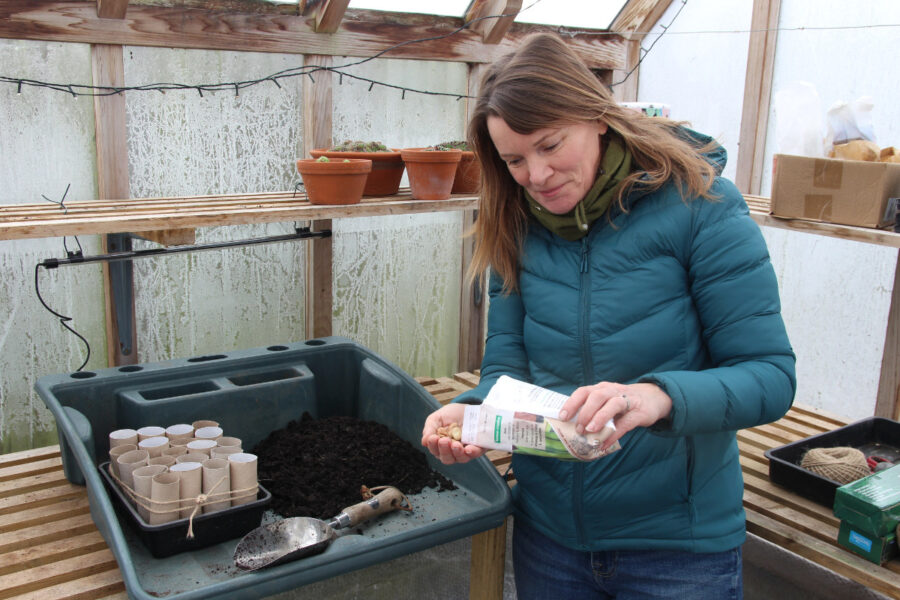
Did you follow my lead in autumn and sow some hardy broad beans? No? Well, not to worry – now is the ideal time to make it up to me! Spring sowings will mature just three or four weeks behind autumn-sown broad beans, especially if you choose quick-to-mature varieties such as ‘De Monica’ and ‘Statissa’. If you have room, grow a swathe of these delicious hardy beans, as any gluts freeze incredibly well. Because soil conditions may well still be quite cold and wet, start off these spring varieties indoors or in a greenhouse/polytunnel now, in individual pots or large modules (or, ideally in ‘rootrainers’ or loo roll innertubes because these bean seedlings produce deep, extensive roots). Very little heat is needed for germination – just a temperature of 6-10°C or so, so there’s no need to fire up a costly propagator unless a long freezing spell is forecast. In fact, excess warmth produces leggy, soft plants that are vulnerable when planted out in April, so keep them lean and mean.
…………
Heel in bare-root fruit
Many of us opt for buying bare-root fruit trees, canes and bushes during winter because they’re frequently far cheaper than buying potted plants. Any time between December and March is a great time to get them planted properly – but only if soil conditions are right (i.e. not frozen or waterlogged). So, if they’re not, what can you do? Let me explain:
Step 1
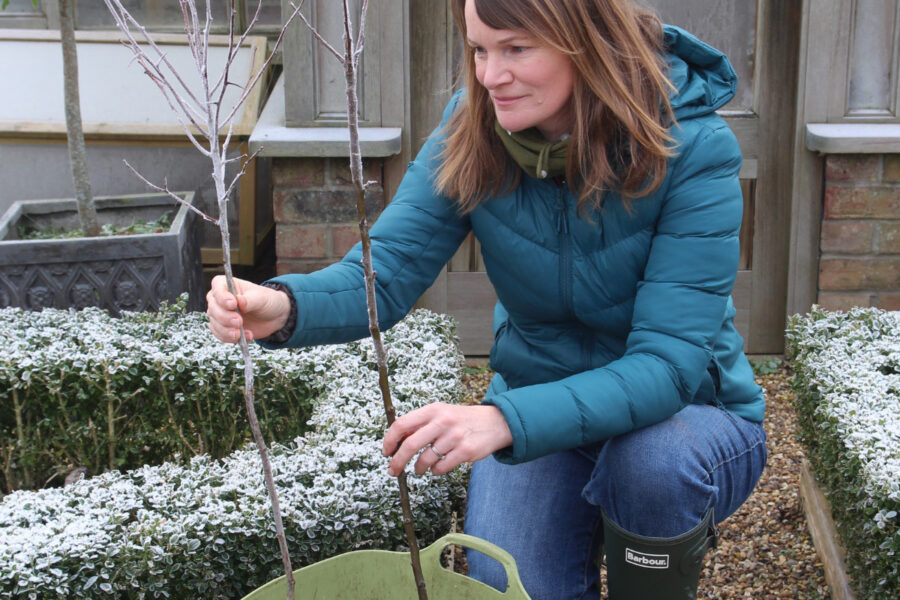
As soon as your bare root plants are delivered, unpack them – don’t leave them in their wrappings. If the roots dry out they’ll shrivel and die (this is one of the main causes of bare-root plant failure). Place the roots in a bucket of water for a couple of hours to rehydrate them (not much longer).
Step 2a
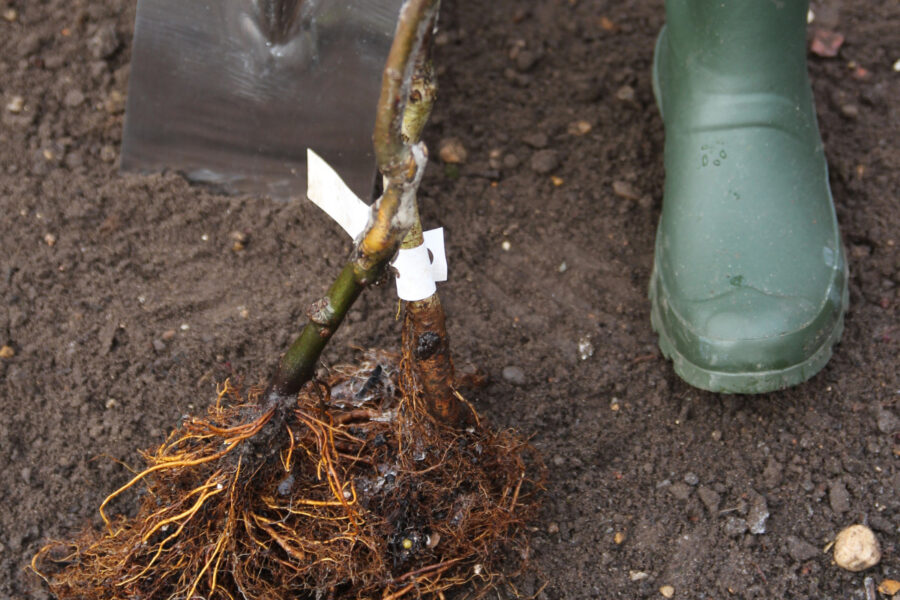
You now have two choices, determined primarily by what ground conditions you have on your plot. Is there an empty bed that’s frost-free and not waterlogged? Then temporarily ‘plant’ your bare-roots in there (this is called ‘heeling in’). Now your plants will be perfectly happy till planting conditions improve.
Step 2b
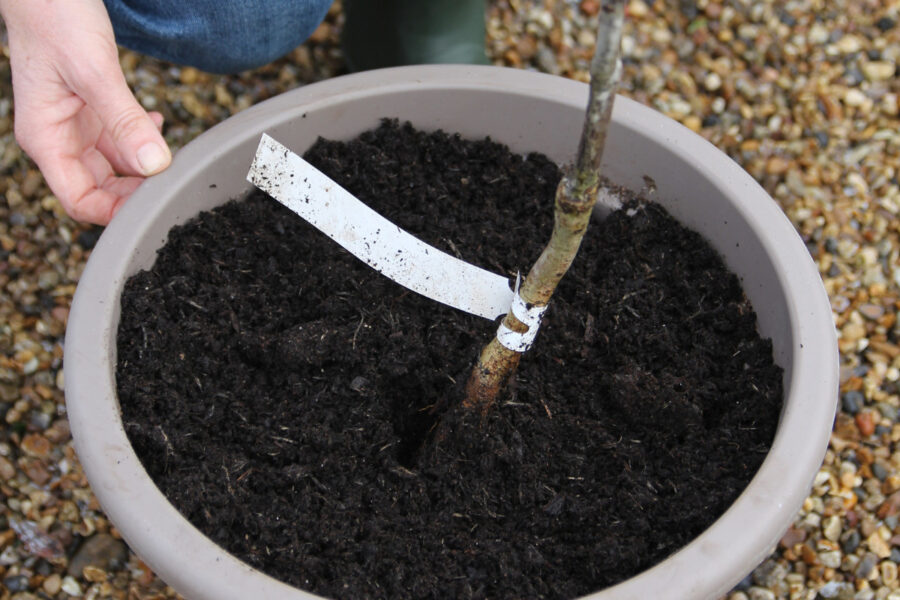
If you don’t have any spare beds, or if chosen areas are all frozen/waterlogged, then option b is for you. Find a large pot (or a few large pots), fill with any bagged compost you have, then temporarily plant your stock in there, watering it in well. Place in a frost-free shed or garage until soil conditions improve for planting.
…………………
Top Tip – Plant garlic
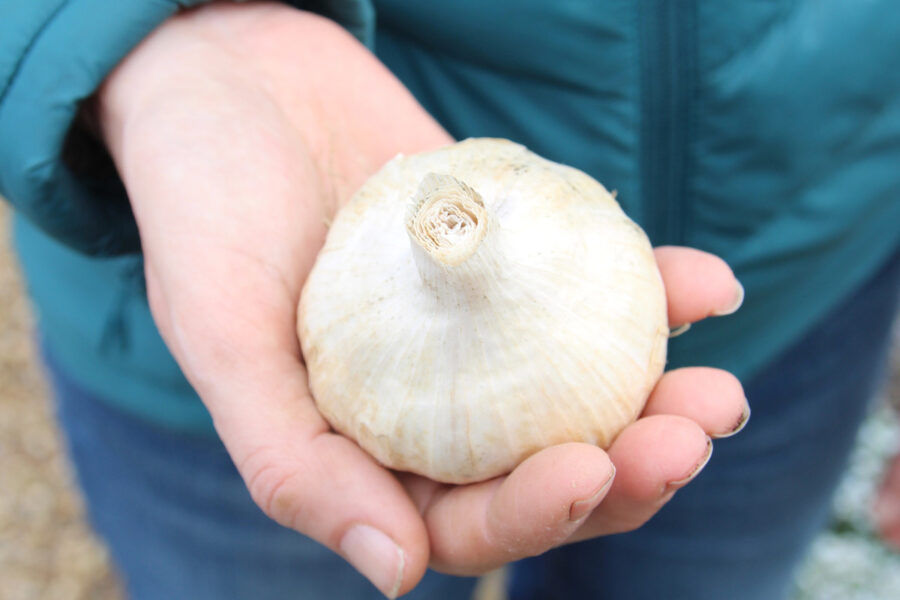
While growers of autumn-planted garlic will no doubt be seeing shoots appearing above ground, many of us play catch-up by starting off some spring garlic, now. Whilst the resulting heads may not be as large as those set off in autumn, spring-planted garlic still gives a decent return if well fed, mulched and watered. Autumn garlic varieties perform best if they’re exposed to a period of chilling, but spring planted varieties frequently don’t need such a cold spell and they bulk up quickly, too. Look for reliable spring types such as ‘Solent Wight’ and ‘Picardy Wight’. Only split up the heads into individual cloves just before planting, and do so gently to deter bruising. The largest cloves give the largest heads, so prioritise these. Plant 4-5cm deep, 15-20cm apart in a sunny spot on well-drained soil, then harvest in July.
…………..
Why not try – Vegetable mallow
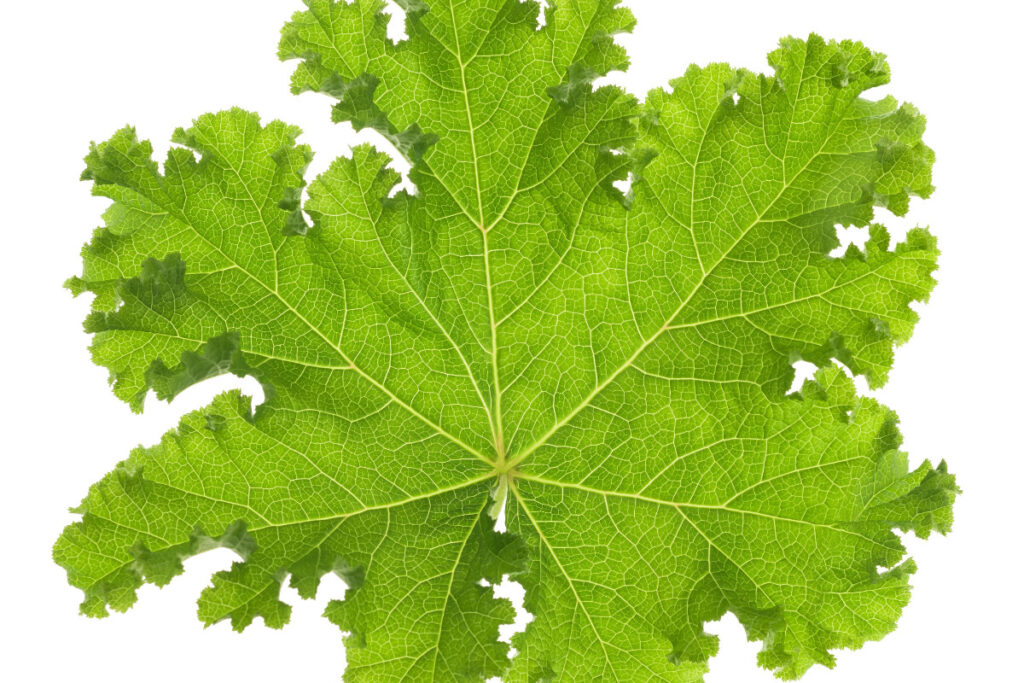
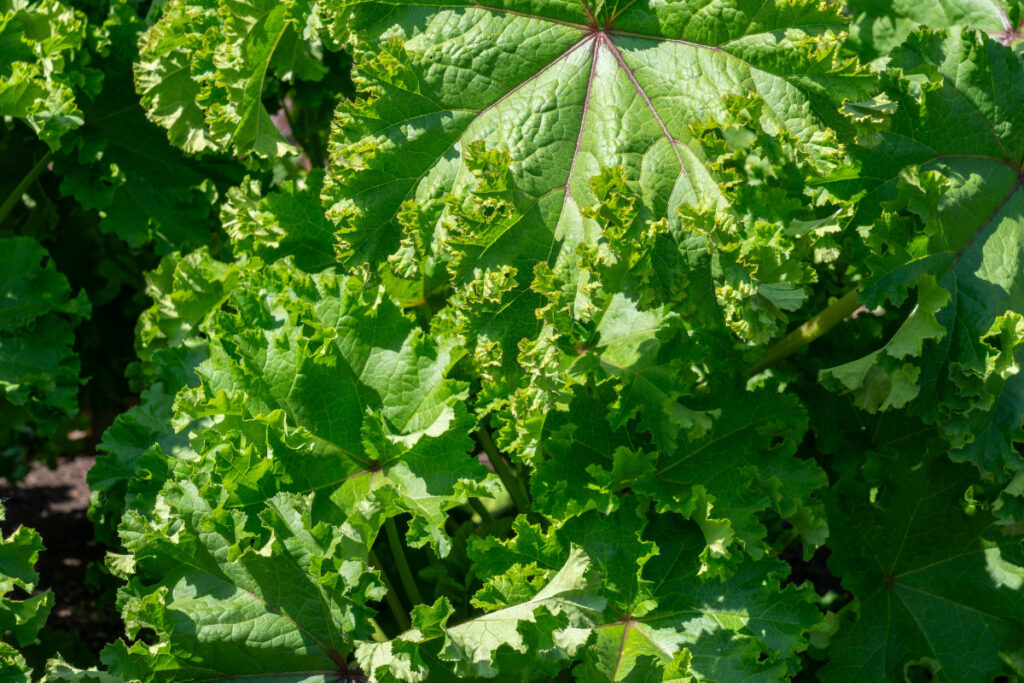
Known botanically as Malva verticillata and also by the common name, Chinese mallow, I grew this edible for the first time last year (seeds are available from www.realseeds.co.uk) and was really impressed by the results. This plant grows like common mallow – on steroids. It germinates well (sow seeds in individual pots under cover in March) and then, once planted out into a sunny, sheltered spot during May, it romps away like ‘billyo’. The leaves ultimately grow as large as dinnerplates, and shredded then wilted down in seasoned butter, they taste great. Plants can easily reach 1.2m tall, and while the tiny pale pink flowers are insignificant, the rich green leaves have frilly edges, making this plant very ornamental. Vegetable mallow is annual, but can self-seed if allowed to for ease in subsequent years. It’s a real winner.
……………….
Five quick jobs
- Celeriac is a delicious crop that needs a long growing season to slowly bulk up its gnarly ‘roots’. Sow it now, under cover, in modules, ready to plant outside into a moist, fertile bed (a shady spot is fine) come early April. I’m finding that F1 hybrids like ‘Neon’ give larger yields on my sandy soil.
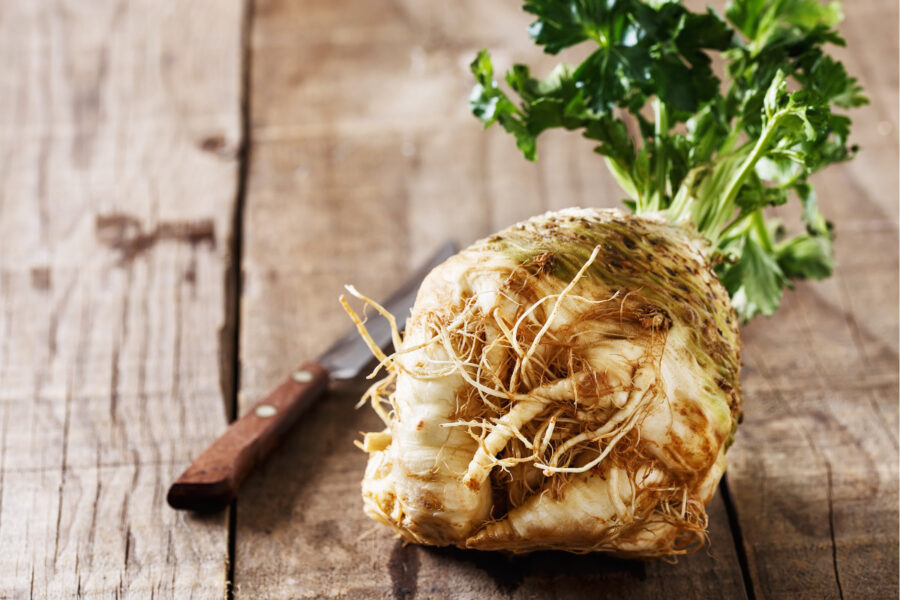
- If you’re making early sowings of long-season, tender crops like glasshouse tomatoes and chilli peppers, be sure to warm your compost up before transplanting the resulting seedlings by moving it into your propagation area. Pricking out tender young plants into cold, wet compost will invite rots.
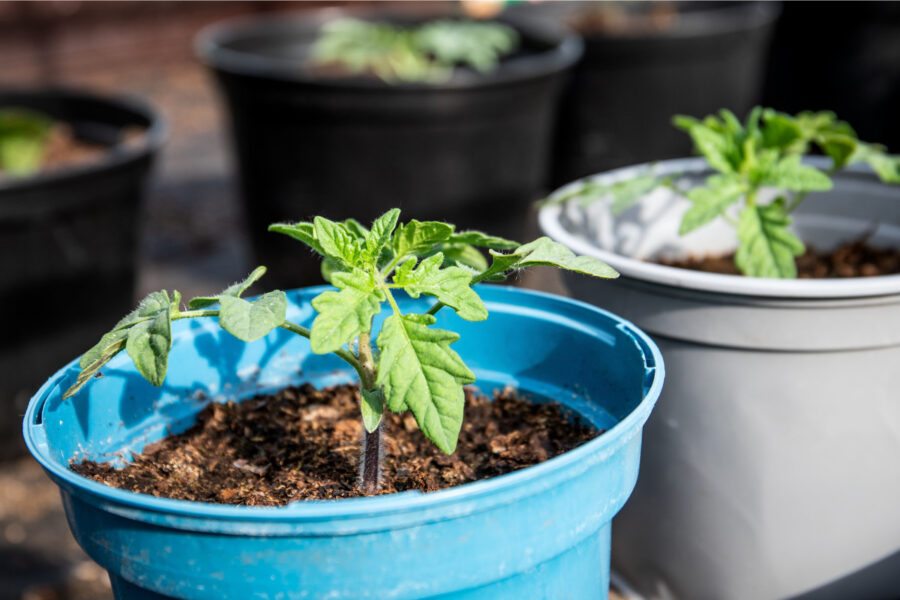
- If your herb plants are looking a bit lacklustre, inject them with some renewed vigour before spring kicks off. Clump-forming perennials like mint, oregano, lemon balm and bergamot can be lifted, split into smaller divisions and then replanted into soil boosted by a little slow-release fertiliser.
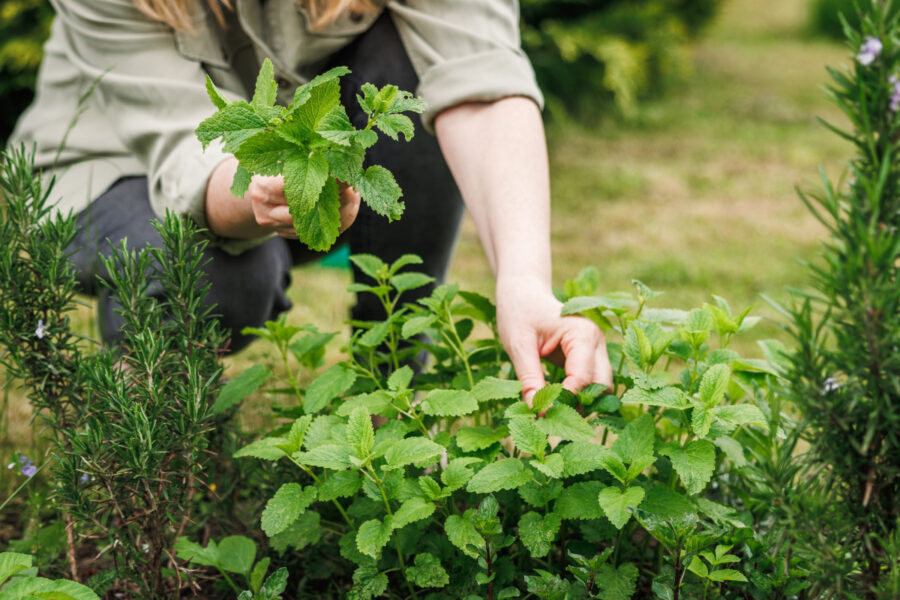
- Keep on harvesting kale, Brussels sprouts, leeks, chard, cabbages and other winter edibles. As soon as temperatures begin to rise in March, these plants will be triggered to flower (this is called ‘bolting’) which destroys their eating qualities. Cauliflower and leeks in cheese sauce, anyone?

- Are you firing up your heated propagator in the next few weeks? Set it up early and check that the temperature is as you’ll need it, using a thermometer that records the maximum and minimum readings. A plug-in thermostat is an effective way to keep the growing environment to your preferred range.
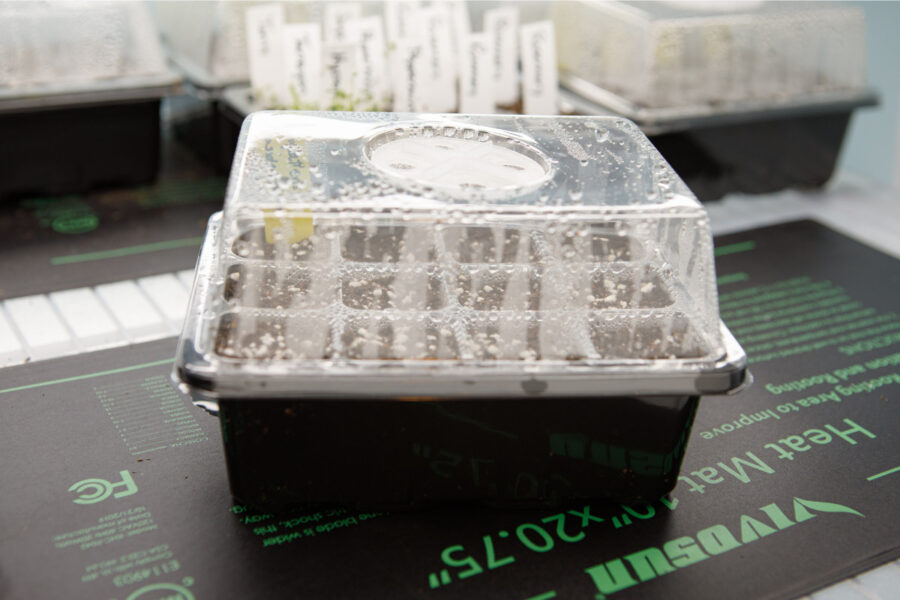
Find more tips, advice and articles like this at the Amateur Gardening website. Subscribe to Amateur Gardening magazine now

